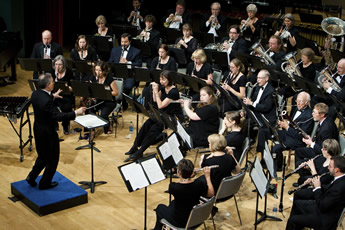Kate Steinbeck, long a champion in our area for first-rate chamber music playing, has crafted a new series of events with something for everyone. The Altamont Theater on Church Street, the new venue for Pan Harmonia, is an intimate, cabaret-style space with a bar downstairs. Listeners are invited to come on the second Sunday of each month at 5:00 p.m., buy a beverage and hear the finest local musicians. And while the atmosphere is relaxed and congenial, the music-making as I heard it was strictly business, professionally wrought and beautifully programmed. Steinbeck on flute was joined by guitarist Amy Brucksch and 19-year-old cellist Elizabeth Gergel. Brucksch and Steinbeck have collaborated on several concerts and projects, including recordings, while Gergel is a budding professional, an accomplished freshman at the University of South Carolina, Columbia, where she studies cello with Robert Jesselson. It was a delight to hear the ease with which these three women communicated with one another throughout their varied program.
The concert opener was “Macedonia Song” for flute and guitar from Four Legends (2006) by Atanas Ourkouzounov, one of Bulgaria’s leading contemporary composers. Quiet, introspective, and beautifully haunting, its prayerful nature served as a prelude for what followed. Next was Jardin Secret (1998) by Marc Bélanger, a programmatic suite for guitar of three movements (“Primevére,” “Orchidée,” “Nénuphar”), each a different flower. Brucksch is equally at home as a skillful solo player, paradoxically both relaxed and intensely focused no matter the technical demands.
For the next set, Songs of the Spirit, she was joined by Steinbeck in this set of arrangements by Fred Hand (guitarist of the Metropolitan Opera) of “Shall We Gather at the River,” “Amazing Grace,” “Wondrous Love” and “Jacob’s Ladder.” The arrangements were fascinating — full of changing harmonies, drones and dissonances. Steinbeck’s phrasing was superb, especially in “Amazing Grace” and in a swinging “Jacob’s Ladder” which went the farthest afield of the original melody.
Last before intermission was the single-movement Sonata (1969) for cello and guitar by Radamés Gnattali, a Brazilian pianist, composer, and conductor. The quirkiness of the piece stemmed from the frequently conflicting meters of each part, potentially a minefield of difficulties, but it was breezily negotiated with no problem.
The second half opened with “The Farmer’s Daughter” from Finnish Suite, a light and accessible work for flute and guitar (1993) by Australian composer Paul Svoboda (b. 1959). This is the amusing second movement of the suite and concerns a springtime courtship in which a boy asks for the hand of the beautiful farmer’s daughter in marriage and she rejects his suit, offering him “her glove rather than her hand.”
This was followed by the program’s most challenging and intriguing work, Canciones y Danzas (1991) by Vivian Fine (1913-2000), a suite of five movements for flute, cello and guitar inspired by a variety of Spanish subjects. According to the composer, “Adios, Bilbadito” (Farewell to Bilbao, 1937), references the fall of the city to the forces of General Franco during the Spanish Civil War of the 30’s. Eerily, toward the end of the movement the guitar simulates people leaving the city. In “Oda a las Ranas” (Ode to Frogs) the cello impersonates the frog of Pablo Neruda’s poem. “Tango with the Frog-Prince” with cello as frog and flute as the Señorita was played with delightful abandon and flawless ensemble, while “Soliloquio” for solo guitar recaptured an elegiac mood of seriousness. The final “Jiga de la Muerte” (Death’s Jig) was noteworthy for its unsettling and sinister-sounding ostinati, almost like the rattling of bones against the wailing of flute, and brought the afternoon’s biggest applause. The program ended with the suave tango nuevo “Milonga del Angel” by Astor Piazzolla.












